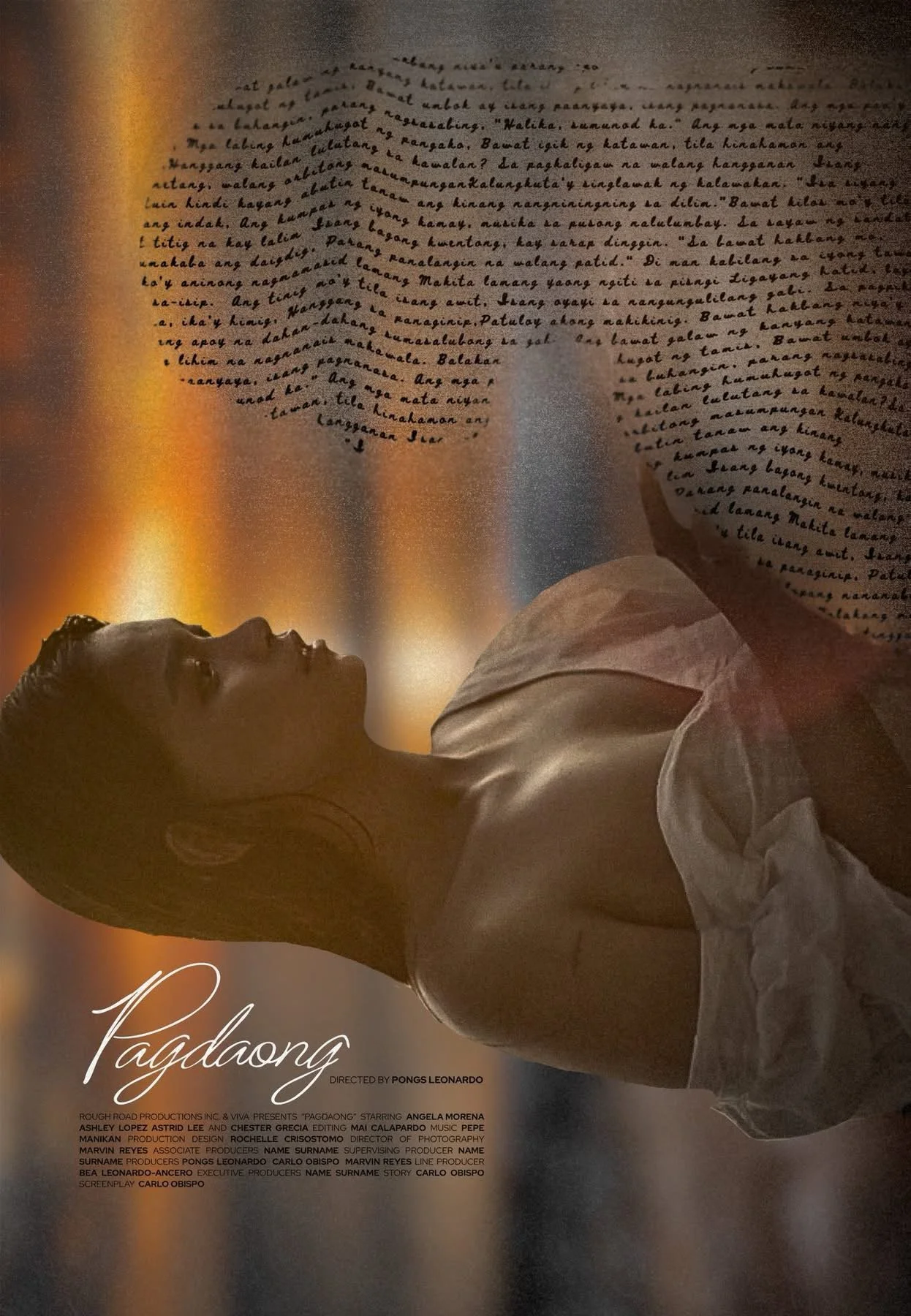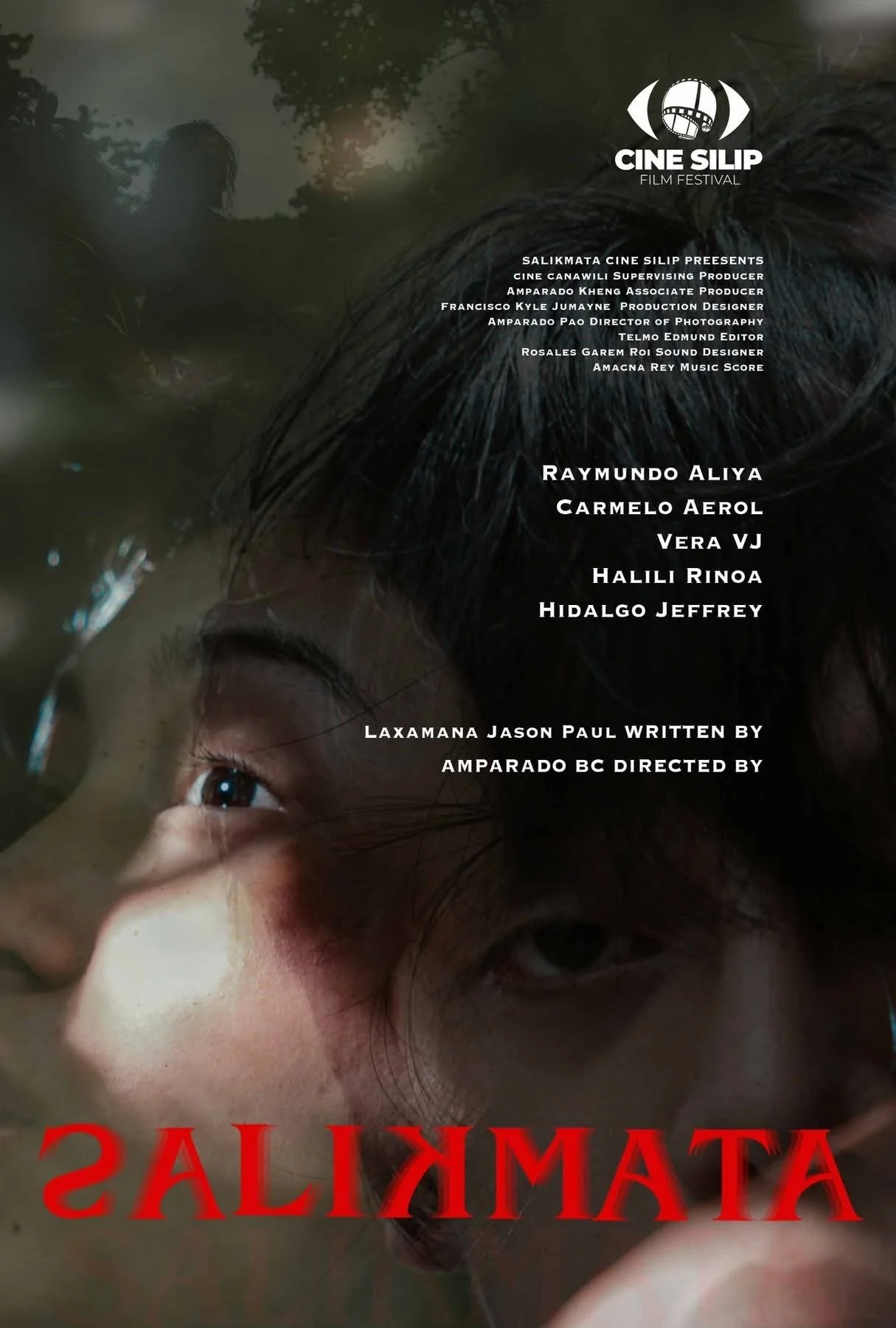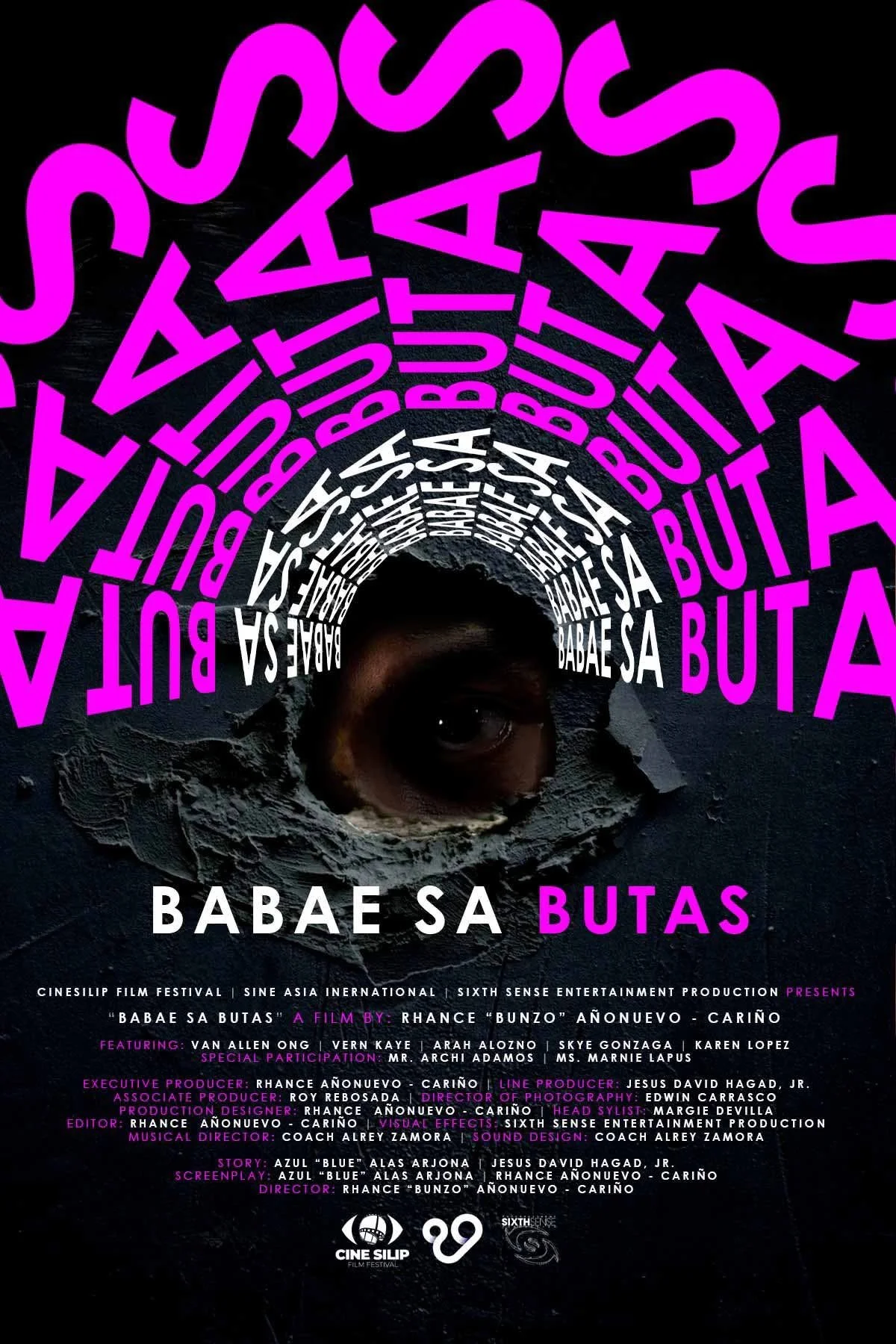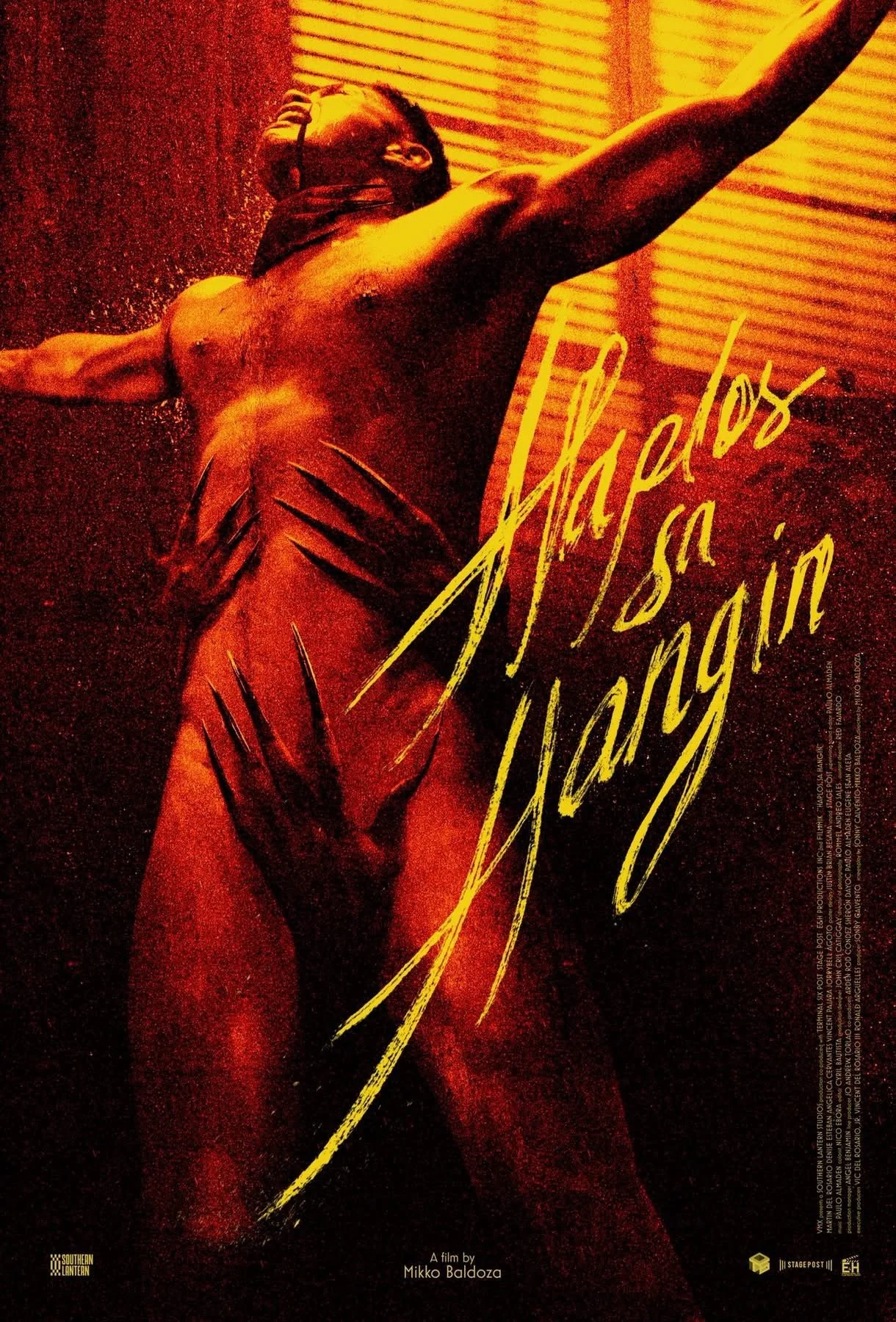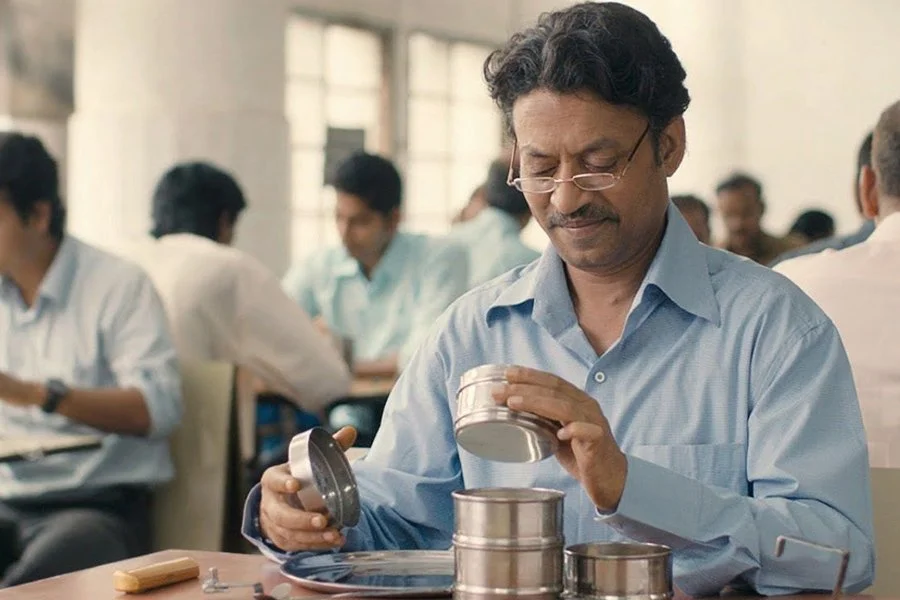‘CineSilip 2025’ BITE-SIZED REVIEWS: Big Screen, Bold Desires
‘CineSilip 2025’ BITE-SIZED REVIEWS: Big Screen, Bold Desires
Feature art by Arri Salvador
In its inaugural edition, the CineSilip Film Festival shines a spotlight on the vision and craft of a new generation of Filipino filmmakers. Headed by Ronald Arguelles, former festival director of Cinema One Originals, CineSilip features seven titles across genres — from horror to comedy to drama — giving its creators the freedom to tell stories that challenge, provoke, and entertain. These are films with mature themes and sensibilities, unafraid to explore the complexities of desire, morality, and eroticism. We’ve seen all seven feature films the festival has to offer. Here’s what we think of them:
Poster of Maria Azama: Best Pornstar | CineSilip
Maria Azama: Best Pornstar
Dir. Alpha Habon
Maria Azama: Best Pornstar tells the story of Jopet (Albie Casiño), whose wildest fantasy comes true when the Japanese adult video actress he’s been gooning to gets isekai’d (transported) to the real world. Soon after, though, he realized fulfilled desires aren’t as pleasurable as he imagined — getting too much sex is draining him out mentally and physically. Looking at the poster and reading that synopsis, you’d think this would be the most perverse film in the entire CineSilip lineup. But it turned out to be the biggest surprise for me — still a little pervy, sure, but unexpectedly wholesome.
What it really is, though, is a raunchy rom-com that’s equal parts sweet and funny, thanks to the ensemble cast led by Casiño and Dani Yoshida as the titular pornstar. Both ham it up for laughs, and it’s hard not to be endeared to their characters with their undeniable chemistry. Beneath the jokes, there’s also a surprising layer of depth as the film tries to explore the journey of an objectified figure, Maria Azama, coming to terms with the truth of her existence and learning to become human, to resist the purpose she was made for.
Unfortunately, its brisk 63-minute runtime doesn’t give these themes enough time to breathe. Add on top of the technical hiccups — unsynced and harsh audio that occasionally cuts out, rough editing, and flat visuals. The film feels like it was rushed to make it in time for the festival. One thing you can’t deny, though, Maria Azama: Best Pornstar has a lot of heart. –Joe Balinbin
Poster of Pagdaong | CineSilip
Pagdaong
Dir. Pongs Leonardo
Pongs Leonardo’s Pagdaong frames its attempt at an immense love story through a series of conversations between a “critic” and a poet, with the former asking about the inspirations behind an ode. As their talk unfolds, the history between the poet, the critic, and the poem’s subject slowly surfaces.
It’s an interesting conceit: love, memory, and creation intertwined through conversation. Leonardo even throws in his own musings on art and criticism — how the artist must not bow to the judgment of those who question them or dilute their vision for the masses — through his characters. However, it plays more like self-defense from critique than substance. In the context of the film, it doesn’t really matter. Without all that fluff, the film is really just a simple girl’s love film about connection and relationships. The issue is that very little of that relationship actually comes through.
The film supplements emotion with performance readings, as if sincerity could be staged through cadence alone. Its characters exist more as paper-thin ideas than as people, their exchanges never quite convincing you of a shared history. The relationships among the trio are presented as something profound, yet the film never earns that depth. Even the plot, which moves in strides, seems designed merely to reach certain narrative checkpoints. Each scene feels written to fulfill a function rather than emerge from lived experience.
And then there’s the truly troubling part. The manic pixie dream girl trope is already controversial, but the film takes it further by having two grown adults find some form of growth through someone younger. What makes this dynamic even more uncomfortable is the film’s self-awareness. It recognizes the power imbalance, yet never challenges it, even reinforcing it under the guise of love. This comes on top of an already problematic portrayal of sexual assault, in which the same “muse” figure is victimized.
There’s a sense that Pagdaong knows the language of great love stories, but not the rhythm of one, its vision of love undermined by both its artifice and its ethical blind spots. –Balinbin
Poster of Salikmata | CineSilip
Salikmata
Dir. BC Amparado
Salikmata is the most structurally bold (pun intended) entry in the festival lineup, told in reverse chronology, which makes us witness the choices leading to the consequences as the story moves backward in time. Think Gaspar Noé’s Irreversible or Christopher Nolan’s Memento, only this time unfolded through 13 chapters (yes, that many), tracing the undoing of a simpleton named Jordan, played to perfection by Aerol Carmelo. He finds himself caught in a fatal affair with Karina, the daughter of a politician, brought to life by Aliya Raymundo, who nails the energy of a barok nepo baby, as the two are stalked by a supernatural force rooted in Kapampangan folklore.
At its core, the film is a study of moral erosion, how corruption and power imbalances slowly eat away at one’s sense of right and wrong. You could even read Jordan as a stand-in for the Filipino everyman — naive, eager to please, and easily swayed with gifts — only to be rewarded with manipulation and exploitation. It’s an intriguing thought, and the ambition behind it is undeniable, but the film would have been much more effective if it hadn’t moved at such a brisk pace. The reverse chronology works best when we’re given time to sit with the choices that led to the consequences, but Salikmata rarely lets moments breathe. It moves too quickly, not allowing the weight of each decision to sink in, which defeats the purpose of its structure.
The supernatural elements, which play a crucial role in the consequence, also feel lackluster in execution. Aside from a few well-edited sequences that disorient through an effective mix of reversed footage, distortion, and overlays, the film treats its haunting force more like an easter egg hunt than a true source of atmosphere.
And so, unlike Irreversible, which uses its unconventional structure to deepen the tragedy of the destruction of something beautiful, or Memento, which turns its backward narrative into a gut-punching investigation into memory and guilt, Salikmata never arrives at a truly satisfying note. Its structure feels more like a gimmick than an emotional design. What could have been a haunting reflection on corruption and its consequences ends up as an intriguing, but ultimately muted, exercise in form. –Balinbin
Poster of Babae sa Butas | CineSilip
Babae sa Butas
Dir. Rhance Añonuevo-Cariño
Babae sa Butas is baffling, and not in a good way. Its synopsis describes it as an erotic drama-comedy about a tricycle driver who has a sexual encounter with a mysterious woman through a glory hole. When he sets out to find her, hoping she can help fix his crumbling relationship, he discovers he is being deceived by someone close to him. It’s kind of like a whodunit, only instead of finding a killer, the protagonist is searching for whoever gave him a blowjob. A whosuckedit. Except none of that actually happens.
Sure, that might be the backbone of everything that happens in the film, but it doesn’t seem particularly interested in following that thread. Instead, it drifts through a jumble of uninteresting subplots that feel more like contrivances than genuine developments. It does a lot without really doing anything. There’s a tangent about an office affair between the tricycle driver’s partner’s sister and her boss, which then leads to another subplot about her entering sex work to lift herself and her sister out of poverty. Meanwhile, the supposed main character just wanders around aimlessly, still searching for the mysterious woman he once had an encounter with. And somehow, it all ends with the tricycle driver marrying his partner, even though their relationship never feels like the film’s focus. The conflict — the woman in the hole — that’s supposed to drive the wedge between the two barely registers, never developing into anything remotely compelling. If you’re confused about what you’re reading, don’t worry. It’s not your fault — the story is simply a mess.
There are, to be fair, glimpses of filmmaking brilliance here, like how it shoots a phone screen in a way that feels straight out of Park Chan-wook’s playbook. But “glimpses” is the keyword, because even that isn’t consistently good. Whatever spark the film might’ve had gets buried under all the narrative chaos and technical hiccups, with the sound cutting in and out, scenes that don’t quite flow, and a musical score that seems to be having an identity crisis. Sometimes it’s upbeat techno, like something from a porn parody within a film making a pastiche of porn; other times it blasts like a ’90s action movie, then suddenly turns moody, like it wants to be a Hong Kong heroic bloodshed flick. Seriously, what kind of film is this? —Balinbin
Poster of Haplos sa Hangin | CineSilip
Haplos sa Hangin
Dir. Mikko Baldoza
An erotic horror from Mikko Baldoza, Haplos sa Hangin centers on Emman (Martin del Rosario), a freelance artist who has just moved in with Liz (Angelica Cervantes), his fiancée and partner of seven years, only to find their neighbor Althea (Denise Esteban), a woman seemingly trapped in an abusive relationship, slowly writhing into their lives. Far from a gentle caress of the wind, the film bursts open with its title design in haunting reds and yellows, while its chapter headings (which are inspired by Langit Lupa, a traditional Filipino game) glide like marquees, setting a visual rhythm that shifts between domestic tension and the creeping dread of desire.
What starts as a concern quickly turns into a taut exploration of boundaries and obsession, eventually crossing the line from empathy to moral compromise. Strong performances from the entire ensemble imbue the film with raw, compelling intensity that charges every fraught interaction. However, there are moments where the film jumps a little too quickly between chapters, and some story beats could use a bit more time to fully settle and immerse the audience. On the other hand, it doesn't linger on nudity for the sake of titillation, but instead shows bodies in honest detail. Stretch marks and imperfections are fully visible, which I appreciate, as it grounds its sensuality in realism.
The film also surprisingly practices restraint, often avoiding full nudity in shower and masturbation scenes. Instead, it opts for close-ups that focus on the characters' expressions and gestures, which make the scenes even more impactful than expected. Aside from its intimate framing, the film's grading and practical lighting effects are dead stunning — filling the screen with ominous reds and greens to brooding blues. This ties perfectly with its core as a stylish film that blends modern visuals with elements of Filipino folklore. Overall, Haplos sa Hangin breezes in as a local horror to watch out for. —Arri Salvador
Poster of Dreamboi | CineSilip
Dreamboi
Dir. Rodina Singh
Dreamboi, Rodina Singh's opus, throbs in its visual and sonic environments filled with vibrant motifs and explosive energy. It follows Diwa (EJ Jallorina), a trans woman, on her cathartic fantasy with an audio porn star known as “Dreamboi” (Tony Labrusca), as it moves with the pulse of its editing techniques and camera work, making visual language the film's strongest suit.
The film brings in a range of genres — thriller, drama, romance, comedy — that represent the fear, danger, struggle, and solidarity experienced by trans people. While Diwa’s fantasy lures us into a lurid, electrifying world, the film reveals a deeper, more tender reality — one that explores her desires, battles, and humanity with heart and honesty. It is a candid depiction of what living as trans looks like; it doesn't shy away from the stereotypes often projected onto them — those tied to sex, money, or survival — but instead shows how nuanced trans lives can be. After all, they're more than just their gender identity. They're complex, capable of doing and feeling, and most importantly, deserving of the same human rights just like everyone else.
While some dialogue reflects more of Singh's authorial control than Diwa's individuality, it doesn't diminish the emotional and societal truths the film carries throughout. Dreamboi is serious but never cynical; erotic without being exploitative. Even in its sensual scenes, the film exudes respect and tenderness, where intimacy is unadulterated and desire coexists with dignity. The basement, where Diwa's fantasy and reality first collide, transforms into a metaphor for the hidden spaces trans people often occupy just to protect their comfort and pleasure. Yet it is also a space for liberation, where she reclaims her agency. In Dreamboi, perhaps the truest dream is a world in which trans people are met with genuine acceptance and inclusion. Until then, protect the dolls, honor trans stories, and let's help each other carve out spaces where we can all feel safe and heard. —Salvador
Poster of Ang Lihim ni Maria Makinang | CineSilip
Ang Lihim ni Maria Makinang
Dir. Gian Arre
Expanding on Gian Arre’s Gawad Alternatibo short from 2022, Ang Lihim ni Maria Makinang is a surreal coming-of-age film about love, loss, and the burden of time. The film situates itself in the evolving landscape of Filipino mythmaking cinema through the story of Maria (Aiko Garcia), a girl who never seems to age and only appears during a full moon, who falls for Danilo (Gold Aceron), a mortal she stumbles upon in the deep forest. Their bond spans across decades that, for Maria, only feel like fleeting moments in a world that changes faster than she can grasp.
The acting chops are strong across the board with Aceron’s grounded portrayal of Danilo as a high schooler, alongside the cast’s believable antics and dynamics that bring life to the banters, the wit, and the awkwardness of growing pains. Some rough edges can be seen in its cinematography — occasional jitters and slips of focus — but its pacing remains effective, immersing audiences as it takes its time and lets this strange yet familiar domain breathe.
With the passage of time, Ang Lihim ni Maria Makinang also touches on the weight of unpursued dreams and how Maria feels the curse of witnessing every loved one’s departure. Her encounters with different versions of Danilo and her experience of waiting and being left behind lend the film a mythic quality in its narrative. Characters wrestle with confusion and moral ambiguity, grappling with the limits of choice and the ways life demands compromise, all while the story remains wholesome, focusing on connection and longing rather than physicality or sensuality. In fact, even when stripped of its sex scenes, the film can certainly stand on its own with its sheer emotional depth and lovelorn reverie. —Salvador






